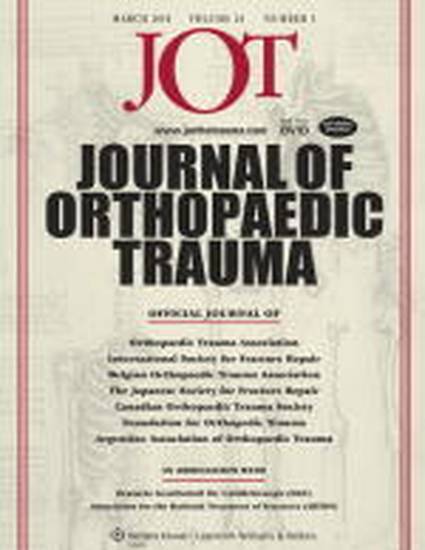
Article
Locked Plating of Distal Femur Fractures Leads to Inconsistent and Asymmetric Callus Formation
Journal of Orthopaedic Trauma
(2010)
Abstract
Objectives: Locked plating constructs may be too stiff to reliably promote secondary bone healing. This study used a novel imaging technique to quantify periosteal callus formation of distal femur fractures stabilized with locking plates. It investigated the effects of cortex-to-plate distance, bridging span, and implant material on periosteal callus formation.
Design: Retrospective cohort study.
Setting: One Level I and one Level II trauma center.
Patients: Sixty-four consecutive patients with distal femur fractures (AO types 32A, 33A-C) stabilized with periarticular locking plates.
Intervention: Osteosynthesis using indirect reduction and bridge plating with periarticular locking plates.
Main Outcome Measurement: Periosteal callus size on lateral and anteroposterior radiographs.
Results: Callus size varied from 0 to 650 mm2. Deficient callus (20 mm2 or less) formed in 52%, 47%, and 37% of fractures at 6, 12, and 24 weeks postsurgery, respectively. Callus formation was asymmetric, whereby the medial cortex had on average 64% more callus (P = 0.001) than the anterior or posterior cortices. A longer bridge span correlated minimally with an increased callus size at Week 6 (P = 0.02), but no correlation was found at Weeks 12 and 24 postsurgery. Compared with stainless steel plates, titanium plates had 76%, 71%, and 56% more callus at Week 6 (P = 0.04), Week 12 (P = 0.03), and Week 24 (P = 0.09), respectively.
Conclusions: Stabilization of distal femur fractures with periarticular locking plates can cause inconsistent and asymmetric formation of periosteal callus. A larger bridge span only minimally improves callus formation. The more flexible titanium plates enhanced callus formation compared with stainless steel plates.
Keywords
- locked plating,
- femur,
- fracture,
- callus,
- secondary bone healing,
- periarticular plating
Disciplines
Publication Date
March, 2010
DOI
https://doi.org/10.1097/BOT.0b013e3181be6720
Citation Information
Trevor J. Lujan, Chris E. Henderson, Steven M. Madey, Dan C. Fitzpatrick, et al.. "Locked Plating of Distal Femur Fractures Leads to Inconsistent and Asymmetric Callus Formation" Journal of Orthopaedic Trauma Vol. 24 Iss. 3 (2010) p. 156 - 162 Available at: http://works.bepress.com/trevor_lujan/10/
